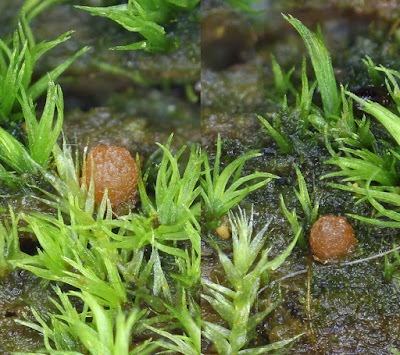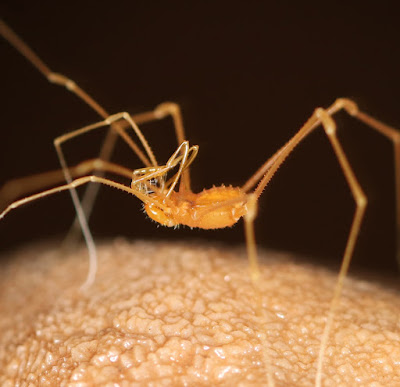[Most Recent Entries] [Calendar View]
Monday, June 25th, 2018
| Time | Event | ||||
| 2:22a | [Fungi • 2018] Lamprospora sylvatica (Pyronemataceae) • A New Bryophilous Ascomycete on Dicranum montanum
Abstract Lamprospora sylvatica is described as a new species based on finds from Ukraine, Slovakia, Germany and Norway. It is characterised by the combination of the following features: pinkish, orange to reddish-orange apothecia with a fimbriate margin, globose ascospores with more or less regular areolate ornamentation, infecting strong rhizoids of Dicranum montanum with an infectious structure consisting of a one-celled appressorium surrounded by a multi-layered cluster of thick-walled cells and haustorium within the rhizoids. The apothecia were always found on rotten wood, which is an unusual habitat for hosts of bryophilous Pezizales. The new species is compared to similar taxa morphologically and by means of DNA sequencing. In the phylogenetic analysis based on LSU and ITS regions, L. sylvatica forms a well-supported clade close to L. feurichiana (on Ceratodon purpureus), L. kristiansenii (also on C. purpureus) and L. campylopodis (on Campylopus spp.). Keywords: Ascomycota, bryosymbiotic fungi, haustoria within rhizoids, Hainich National Park, Malá Fatra National Park, Fungi
Lamprospora sylvatica Egertová & Eckstein, sp. nov. Etymology:— The specific epithet reflects the occurrence in forests. Zuzana Egertová, Jan Eckstein, Michal Sochor and Marcel Vega. 2018. Lamprospora sylvatica (Pyronemataceae), A New Bryophilous Ascomycete on Dicranum montanum. Phytotaxa. 357(1).1; 17–29. DOI: 10.11646/phytotaxa.357.1.2 | ||||
| 7:23a | [Arachnida • 201] Annotated Checklist of Gonyleptoidea (Opiliones: Laniatores) Associated with Brazilian Caves
Abstract In Brazil, the order Opiliones has been well studied, making this country the leader in research with the group, but few extensive works have been made on the distribution of harvestmen associated with caves. In this context, the present paper aims to list all records of the superfamily Gonyleptoidea associated with Brazilian caves, using records from the literature and unreported data from scientific collections. The compiled checklist contains the largest number of harvestmen species recorded for caves in one country, worldwide. A total of 155 species belonging to 7 families were recorded from 952 caves throughout 152 municipalities and 17 states of Brazil. A considerable number of 46 putative (undescribed) new species were recognized, including 9 troglomorphic species. Additionally, 161 new municipal records where found for 58 known species. The most diverse family was Gonyleptidae (104 spp.), with the subfamilies Pachylinae (55 spp.), followed by Goniosomatinae (18 spp.) and Mitobatinae (16 spp.). The number of described species analysed in the present work represents about 12% of the Brazilian opiliofauna of Gonyleptoidea, with many species widely distributed, being indicative of affinity of the group with the cave environments. Thus, the compilation of distribution data of such species (mainly the troglobitic and troglomorphic) can directly contribute to a higher valuation of their habitats, leading to better preservation policies, as well as being useful for future ecological and biogeographical studies. Keywords: Opiliones, Harvestmen, species list, caves, distribution, Brazil Ludson Neves De Ázara and Rodrigo Lopes Ferreira. 2018. Annotated Checklist of Gonyleptoidea (Opiliones: Laniatores) Associated with Brazilian Caves. Zootaxa. 4439(1); 1–107. DOI: 10.11646/zootaxa.4439.1.1 Pérez-González, A. and Kury, A.B. 2002. A new remarkable troglomorph gonyleptid from Brazil (Arachnida, Opiliones). Revista Ibérica de Aracnología. 5, 43–50. museunacional.ufrj.br/mndi/Aracnologia/a |
| << Previous Day |
2018/06/25 [Calendar] |
Next Day >> |



